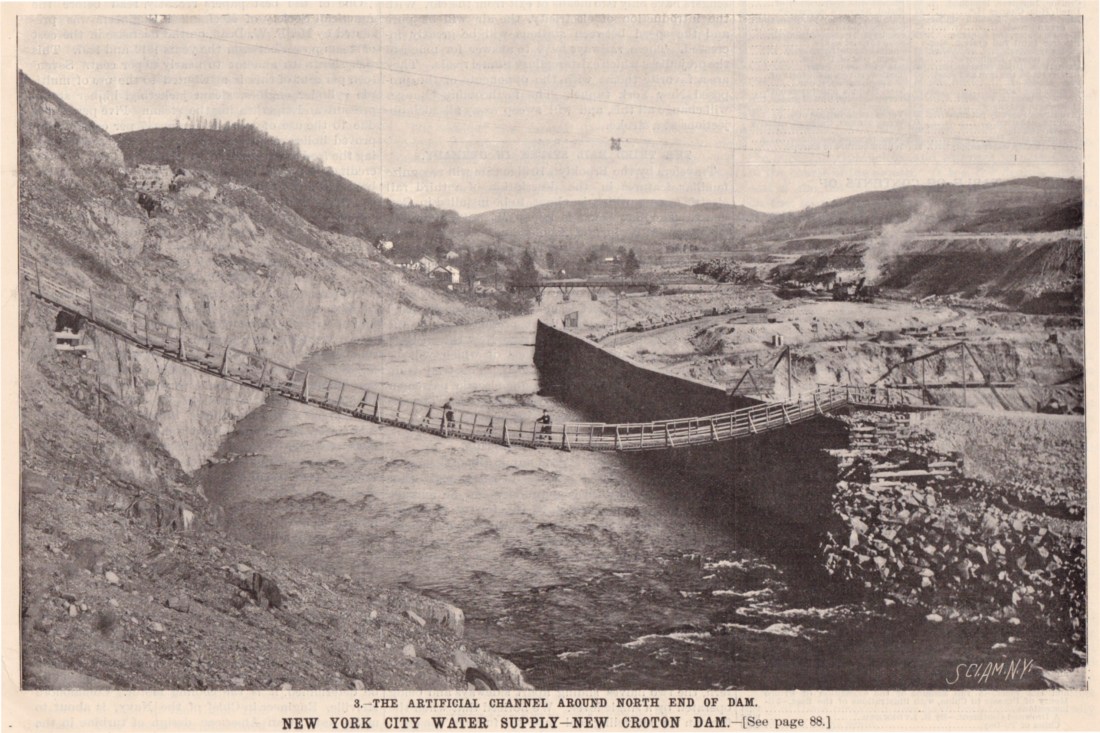
This photograph from Scientific American shows the end result of the first phase of constructing the New Croton Dam—diverting the natural flow of the Croton River in order to dig the gigantic hole that would become the foundation of the dam.
Construction started on September 20, 1892 with excavation to divert the Croton River. A channel 125 feet wide and about a quarter of a mile long was blasted out of solid rock on the north side of the valley. A masonry wall 25 feet high was built along this channel, with earth dams at each end. The temporary dam in this photo was about 1,600 feet long.
Approximately 1,821,400 cubic yards of earth and 400,250 cubic yards of rock were excavated for the foundation. Diverting the river and excavating the hole for the foundation took four years, so this photograph was taken about a year and a half later.
In the foreground is one of the suspension bridges that stretched across the diversion channel. They were used mostly by engineers, allowing them access from the main office building on the north bank (the left side in this photo) down and across the river to the work site.
In the background is the small gauge railroad bridge (technically, a tramway) that ran from the construction site to the quarries. The main quarry was along Crompond Road in Cortlandt, the other was along Croton Avenue, north of Route 129.
Below is a detail of the photo. You can see railcars lined up behind the diversion wall below the bridge.

One thought on “Diverting the Croton River”